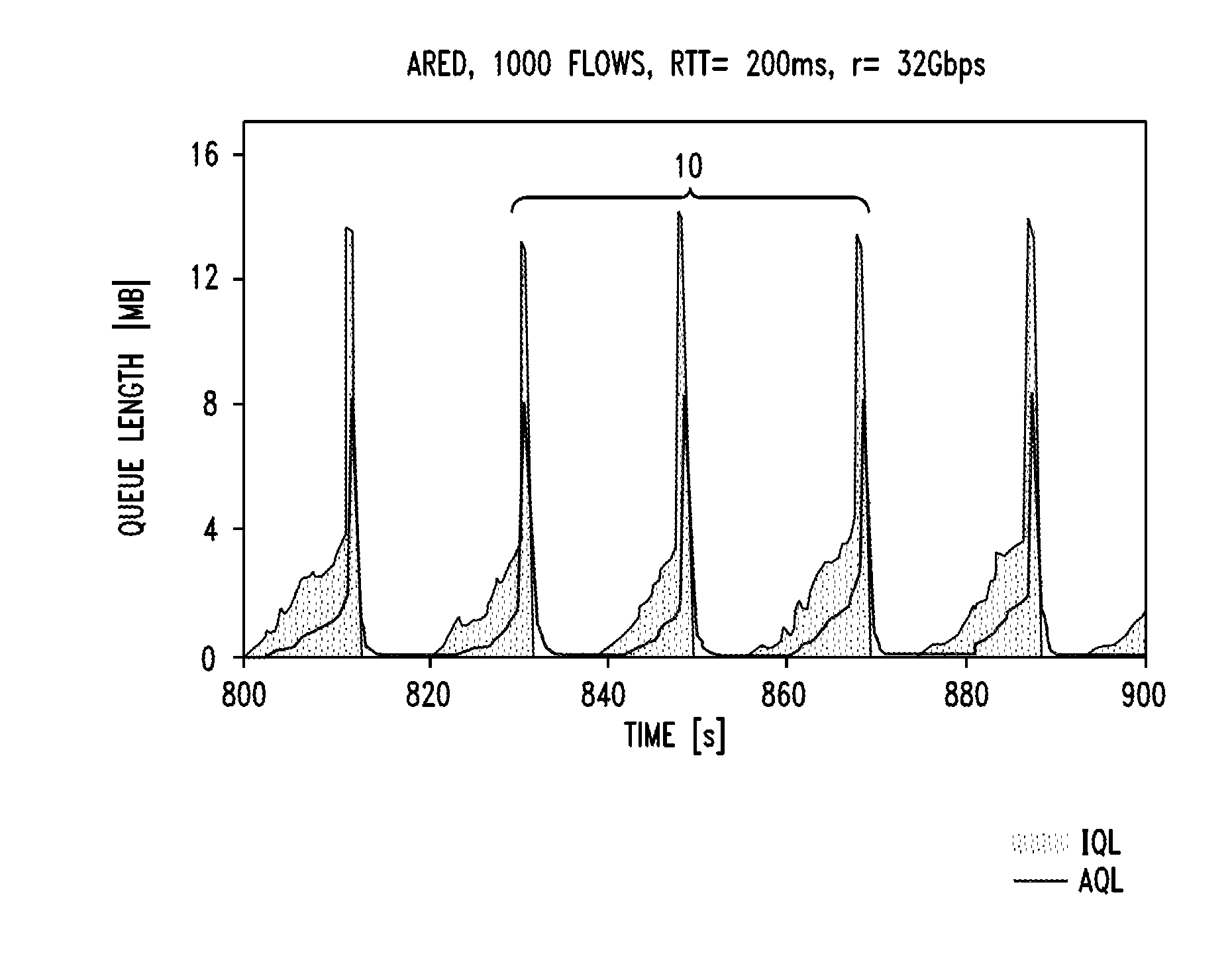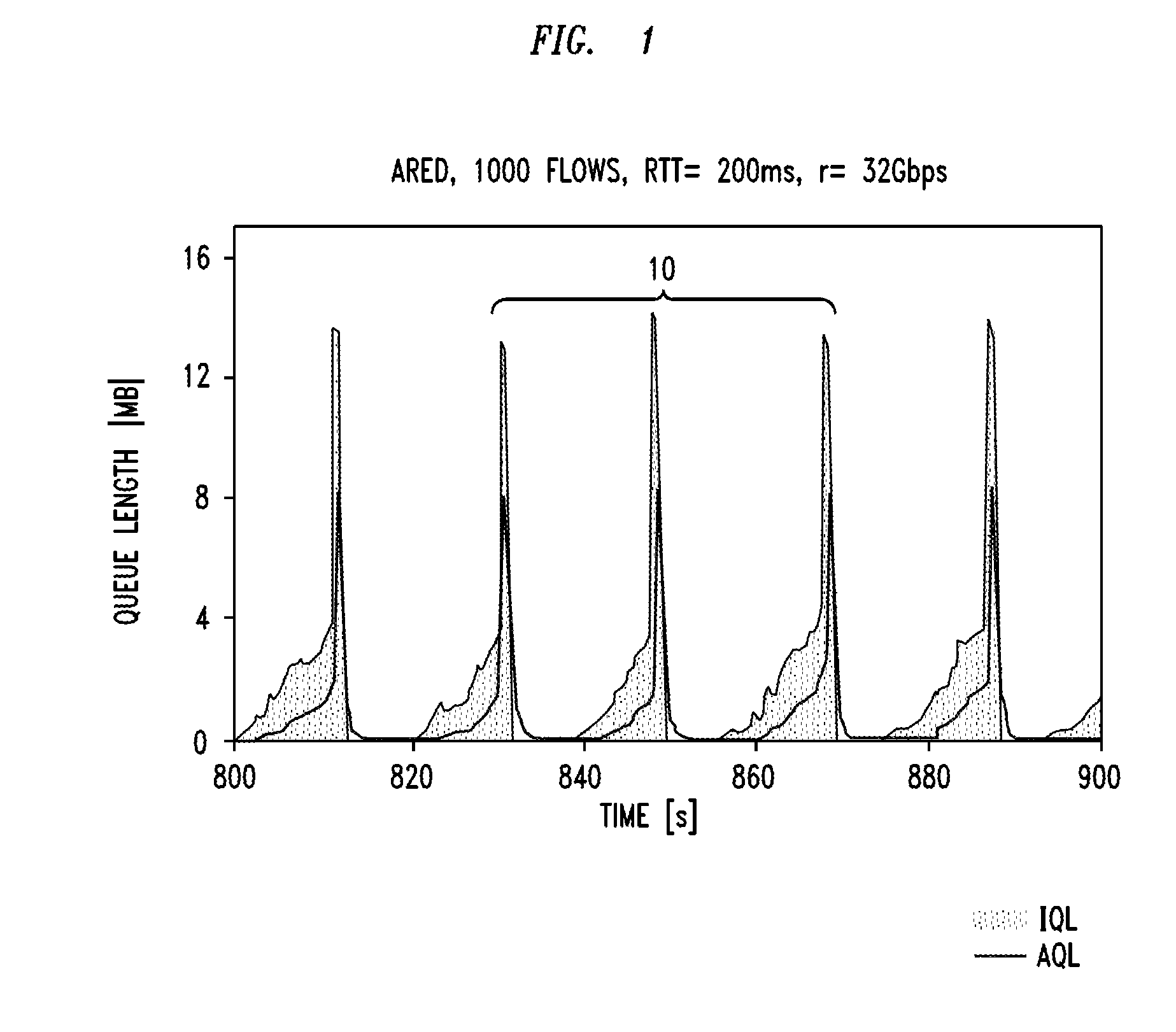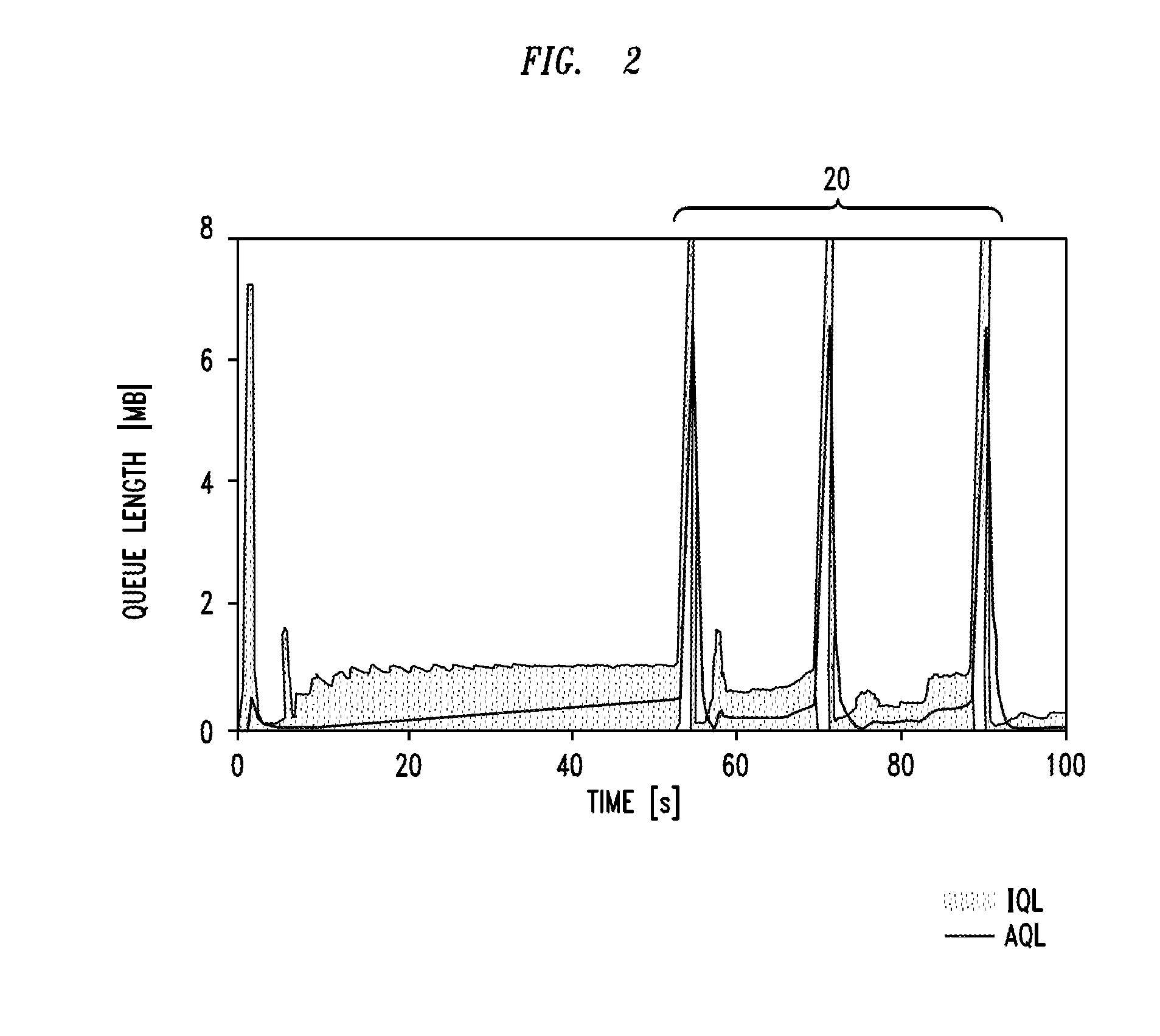System And Method For Implementing Active Queue Management Enhancements For Variable Bottleneck Rates
a queue management and variable bottleneck rate technology, applied in the field of communication systems, can solve the problem of little that an aqm scheme can do to prevent the tcp buffer from overflowing, and achieve the effect of improving the response of aqm schemes and reducing the impact of tcp performan
- Summary
- Abstract
- Description
- Claims
- Application Information
AI Technical Summary
Benefits of technology
Problems solved by technology
Method used
Image
Examples
second embodiment
[0062]The second embodiment methodology relies on the comparison of the IQL with a threshold bsafe>bmax, where bmax is the AQL threshold above which the AQM scheme can ordinarily update the parameters that control the packet drop decisions, so that the frequency of the packet drop decisions increases. As the IQL grows larger than bsafe, the AQM scheme triggers packet losses at time intervals whose duration depends on the distance between the IQL and bsafe: the larger the distance, the shorter the time interval between consecutive packet drop decisions. When the AQL also crosses bsafe, the AQM scheme updates the parameters that control the time separation between consecutive packet drop decisions at time intervals that depend on the distance between the AQL and bsafe: the larger the distance, the more frequent the updates of the parameters. Such updates are less frequent than the extra packet losses controlled by the IQL, but more frequent than the updates of drop-decision parameters...
third embodiment
[0063]A third embodiment provides a methodology for updating the parameters that drive the packet drop decisions when a buffer overflows, to the effect of increasing the frequency of the packet drop decisions, and for imposing a maximum frequency on those updates, so that the frequency of the packet drop decisions does not increase indefinitely. Application of the method ensures that the frequency of the packet drop decisions does not remain locked onto a very small value at times when the traffic mix produces fast oscillations of the queue length.
fourth embodiment
[0064]A fourth embodiment defines a method for adjusting the buffer thresholds that control the packet drop period and the packet drop decision to the traffic mix handled by the bottleneck buffer. The method is based on the observation that the width of the queue length oscillations changes with the characteristics of the traffic mix (number of TCP flows, RTT distribution within the flow population). Application of the method ensures that the queuing delay experienced by packets closely approaches the minimum that is compatible with full utilization of the bottleneck link.
PUM
 Login to View More
Login to View More Abstract
Description
Claims
Application Information
 Login to View More
Login to View More - R&D
- Intellectual Property
- Life Sciences
- Materials
- Tech Scout
- Unparalleled Data Quality
- Higher Quality Content
- 60% Fewer Hallucinations
Browse by: Latest US Patents, China's latest patents, Technical Efficacy Thesaurus, Application Domain, Technology Topic, Popular Technical Reports.
© 2025 PatSnap. All rights reserved.Legal|Privacy policy|Modern Slavery Act Transparency Statement|Sitemap|About US| Contact US: help@patsnap.com



